How Do Sharks Mate? All You Need To Know
Sharks are all vertebrates and fall under the class Chondrichthyes. They are all marine animals and have a cartilaginous endoskeleton.
In sharks the male and female individuals are separate and they only mate (sexual intercourse) during their breeding season at their breeding place.
Sharks have internal fertilization and so can lay eggs, or can directly give birth to their babies. So, for doing so they do need to mate first.
How Do Sharks Mate? The female shark attracts the male shark by sending pheromones. They perform a lot of biting, thrashing, and rolling activities. And sooner or later in the process, the claspers of the male are inserted into the cloaca of the female. That’s how they do copulate and mate with each other.
Sharks become mature enough for mating at the age of 15 years approximately. After they reach this age they both become physically attracted to the opposite sex.
This lets a series of attractive processes that let an adult male and female shark to physically come together so that the male can pass his genetic material into the female’s body where her eggs will be fertilized.
Let’s know how do shark mate with each other.
We’ll know more about it in detail. So, let’s keep reading…
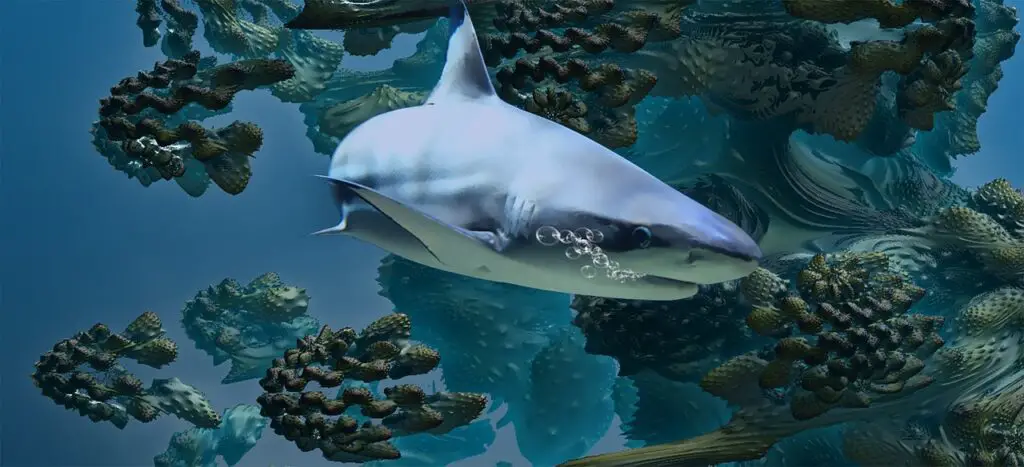
How sharks attract each other?
During the breeding season or when the females are ready to mate they start attracting the males.
Females send out chemical signals called pheromones and these are detected by the males.
They can also detect electric fields and know where their potential mating partners and their surroundings are.
Sharks also have the ability to feel vibrations in the water by using a special organ called the lateral line.
Shark’s brain is complex as those of mammals and they have an adequate level of different senses. They can hear, smell, touch, see, and taste.
They also have a well developed electro-sensory system and pressure reception sensory organs.
Up to two-thirds of the total weight of a shark’s brain is dedicated to smell. They use their smell sense organs to detect their potential mate and know if they are ready to mate.
Using their eyes they know how and where to grab and copulate their partner with some foreplay actions.
Their ears help them sense low-frequency water vibrations. They’re able to track such low-frequency sound vibrations in the water and males are particularly attracted to such sounds made by the females.
Sharks have many nerve endings under their skin and so they can experience distant touch through their lateral line and ventral body surface.
This sense of touch helps them to seduce each other and prepare for sexual intercourse during their foreplay activities.
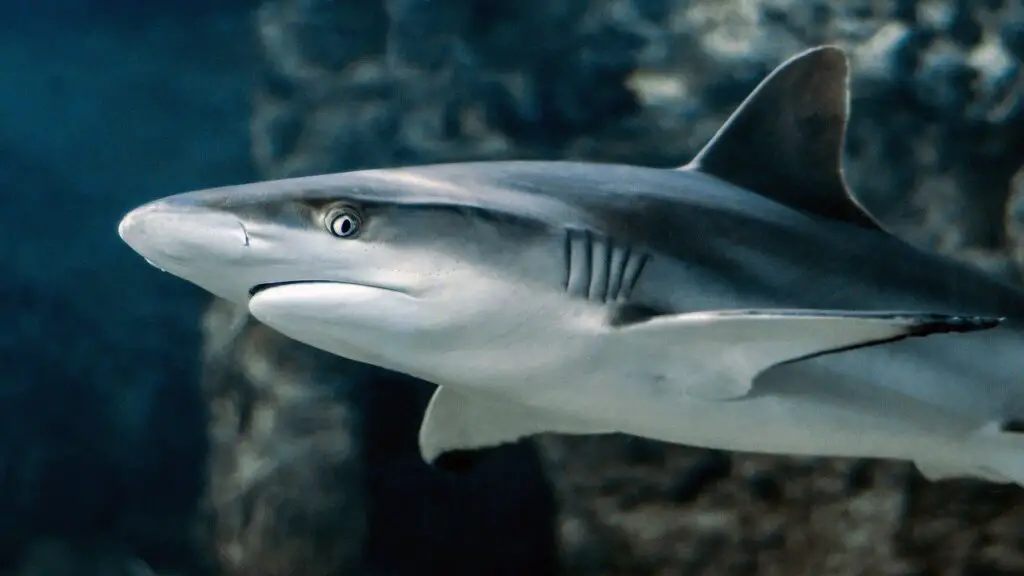
How do they mate?
The female adults of many shark species only reproduce once every two to three years.
Males are always ready once in every year during the breeding season to copulate any female they get. That’s how often they mate.
It is also interesting to note that a single male can mate with many females during the same season.
Moreover, a single female can also mate with many males in the same season, and this increases her reproductive and fertilization chances.
It is very rare to see the glimpses of shark mating as they do usually mate in deep or murky see waters situated at the ocean beds.
Sharks usually have different breeding places. Just like a single population of nurse sharks (Ginglymostoma cirratum) uses the region in the Dry Tortugas National Park (DRTO), Florida as their breeding location.
Once they reach their breeding location, both females and males can detect their potential mating partner using their sensory organs.
After both the sexes com together, the male will touch the female using his lateral and ventral skin surface of the body. Such touches is actually a part of their courtship ritual in which the potential mates spend getting to know one another.
The female can also bite the male in order to get the interest of the male just before mating occurs. You can also consider this as a part of the courtship ritual.
At the end of the female biting phase, the male will bite the pectoral fin (or the region around it) of the female and insert one of his claspers into the female.
During the copulation, one or both the claspers of the male are inserted into the cloaca of the female and are fixed in a position by the erection of the terminal pieces.
It is generally seen that a male inserts one clasper or both together at the same time.
The insertion of the clasper depends on how he has grasped a female with its teeth. This means that if he has gripped her left pectoral fin, he will inside the left clasper eventually.
As a result sooner or later, during copulation, the spermatic fluid of the male is forced through the grooves of the claspers into the oviducts of the female through the cloaca and so the spermatic fluid enters inside.
That’s how mating takes place in sharks.
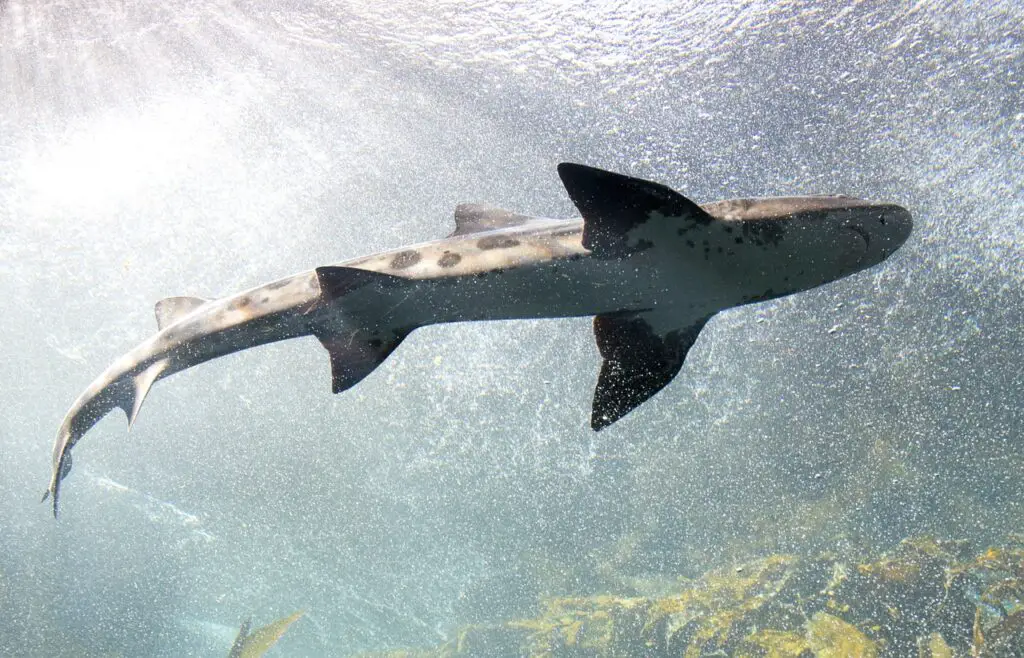
Which organs helps them in mating?
In male shark
The reproductive organs in males include a pair of testes, a pair of vas deferens, a pair of seminal vesicles, and a pair of claspers.
Let’s know about each organ in detail.
1. Testes: Each testes is located at the base of the liver and it produces sperms by spermatogenesis.
2. Vas deferens: These are coiled tube-like structures that send the sperms from the testes to the Seminal Vesicles.
3. Seminal Vesicles: These are triangular chambers where sperms are stored.
4. Sperm Sacs: These are the sacs located behind the seminal vesicles and helps in the temporary storage of the sperm before they come out. It releases the sperms into the cloaca.
5. Claspers: These are the grooved elongations of the pelvic fins. These are inserted into the female vagiina and then the sperms from the cloaca pass into the claspers and then transferred into the females.
In female shark
The reproductive organs in females include a pair of ovaries, a pair of oviducts, a pair of uteri, a pair of shell glands, and a vagna.
Let’s know about each organ in detail.
1. Ovaries: These are situated behind the base of the liver and produce unfertilized eggs.
2. Oviducts: The oviducts are a long thick-walled muscular tube that connects the ovaries with the shell glands. It is the place where the unfertilized eggs are fertilized by the males.
3. Shell Glands: It secretes a thin membrane over the descending fertilized eggs.
4. Vagiina: The shell glands open into the uterus which leads to forming a short vagiina. The vagiina opens into the cloaca by a large aperture.
How do you tell male and female sharks apart?
If you want to know how sharks mate then you should also know how to differentiate a male shark from a female shark.
This will help you understand the mating process better if you ever see them mating.
Recognize the male shark

1. They have a pair of claspers. It is located at the ventral side (lower part) pelvic region of the male shark’s body.
2. Older male sharks have harder claspers due to enough deposition of calcium in there.
3. Male sharks tend to be smaller than females.
Recognize the female shark
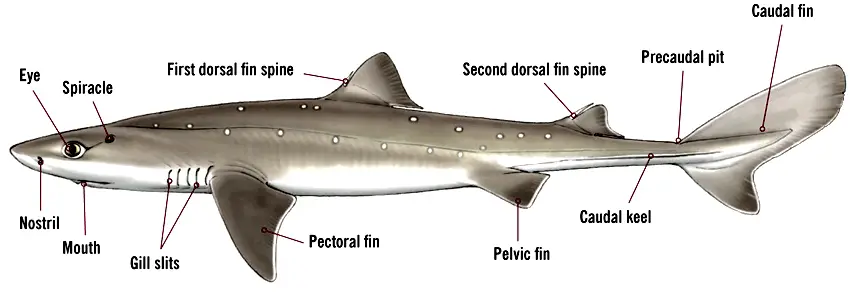
1. Female sharks don’t have claspers. So, if you’re looking around the pelvic fins underside the belly of the female shark’s body, you’ll see only their cloaca.
2. Male sharks usually bite the female around or near the pectoral fins aside the gill-slits during mating. So, adults female will have marks of scars or biting cuts.
Why do sharks bite while mating?
Male sharks don’t have hands or any other body organs to hold on to the female and balance itself to put his claspers into the female’s vagiina. So, they do bite her in order to hold on her and get the balance during mating.
Male sharks generally bite the head, flank, or pectoral fin of the females during the mating ritual.
Females may also bite during the foreplay time just before the sexual intercourse happens.
It is also important to note that, males or even females can also bite each other out of aggression as well. Males may be battling it out for access to females or preferred hunting grounds.
Such type of aggressive bitting is just a way to win over their partners or competitors for mating with a female or between other females to mate with a male.
But the primary reason for biting is just a way to feel the love and have balance for proper sexual intercourse.
Often the male will bite onto the female to hold themselves during mating.
Such bitting can also leave scars in the female’s body. These are also called as the ‘scars of love’.
Why do sharks get scars from mating?
Usually, female sharks get scars from mating. It’s because, during the process of mating, male sharks usually bite the females.
This allows the male to anchor himself and apply enough force to insert one of his claspers into her body. Often, these bites leave scars on the females that may last for many years.
We know that sharks can have an enormous biting force that can even tear the muscles. Luckily enough, the scars on the female’s body are just the signs of love that aren’t so deep.
Such scars of love don’t hurt the female much as their outer skin is thicker and hard enough to resist the pain of love bites from her partner.
It is seen that the females have three times thicker skin as compared to that of the males. This helps them resist the male’s bites.
On rare occasions, during mating season among sharks, ‘mating scars’ appear on female sharks’ bodies caused by the males holding onto them. These scars may be very deep and painful for her.
These aren’t the ‘scars of love’. You can also refer it to the ‘scars of rape’ or as the ‘scars of excessive violent sex’.
Only a very few female sharks show such ‘scars of rape’. Bearing such scars indicates that these aren’t part of regular mating efforts.
These scars are mostly deeper cuts and punctures, indicating more forceful sex such as forceful mating or rape from the male’s side. This happens in rare scenarios but it does happen.
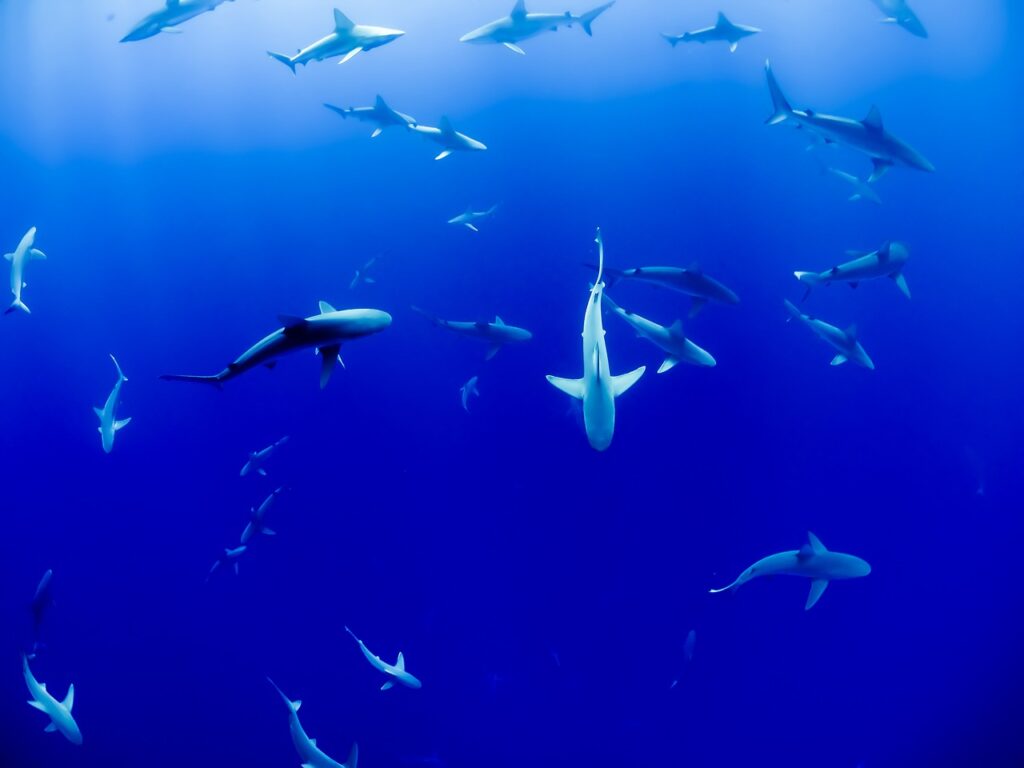
How do sharks give birth after mating?
Sharks can give birth in a variety of ways. They can lay eggs or can directly give birth to their young ones after a gestation period of about 3 years.
Once the mating (sexual intercourse) has happened, soon within a day or two fertilization of the ovum takes place in the region of the female’s oviduct. Now after fertilization, the development of the embryo occurs.
Usually, fertilization happens immediately, though some species like the Small Spotted Catshark can hold the sperm for two years.
The development of the embryo and how they’ll give birth to their young ones depends on the type of species of the shark.
Sharks like the Salon Sharks, Silvertip Sharks, etc. are viviparous. This means that the embryo develops inside the female’s uterus and the pups are fed by the placenta through the umbilical cord.
Sharks like the Zebra Sharks, Horn Sharks, Carpet Sharks, etc. are oviparous. This means that the female mother will deposit fertilized eggs in the ocean bed which will hatch outside the mother’s body.
Sharks are like Tiger Sharks, Nurse Sharks, Greenland Sharks, etc. are actually ovoviviparous. This means that the eggs hatch inside the mother’s uterus and the pups soon start to feed on the other unfertilized eggs and other pup fetuses to survive. These all happen inside her body and the pups also develop inside. They will come out after their partial development is over.
In rare cases, it is also seen that when the female doesn’t get any potential male to mate with her then they can also reproduce asexually.
Though the asexual type of reproduction is a very rare form of breeding that has only been observed in Hammerhead shark species.
In the asexual type of reproduction female sharks are able to reproduce without a mate.
Also in some scenarios it is seen that the female Zebra shark can switch from sexual to asexual reproduction in the absence of male sharks.
Another one is the female Sawtooth sharks that have also been observed to produce offspring asexually without even mating with a male.
